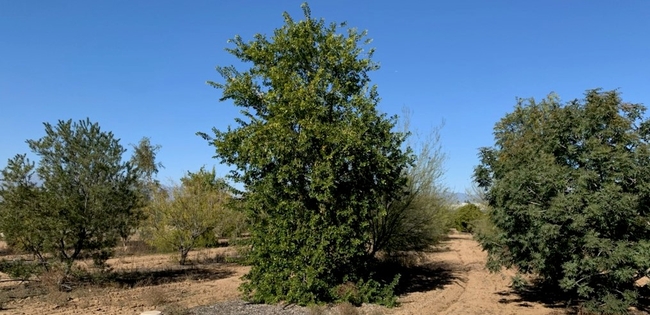
Posts Tagged: trees
Electrical weed control in organic blueberry - Oregon State cooperators
Several of us are part of a multi-state project on electrical weed control in organic blueberry and orchard crops. Tong Zhen is the lead grad student researcher on the UC Davis part of the project and we are working closely with our counterparts at Oregon State University (Marcelo Moretti and team)...
A Presidential Love of Bees: From 'Bee Houses' to 'Bee Trees'
Today, on Presidents' Day, let's buzz back in history to our first President and his love of honey bees. Picture this: George Washington (Feb. 22, 1732-Dec. 14, 1799) is eating hoecakes with honey, and adding honey to his tea, something that historians say he did every day. Historians also relate...
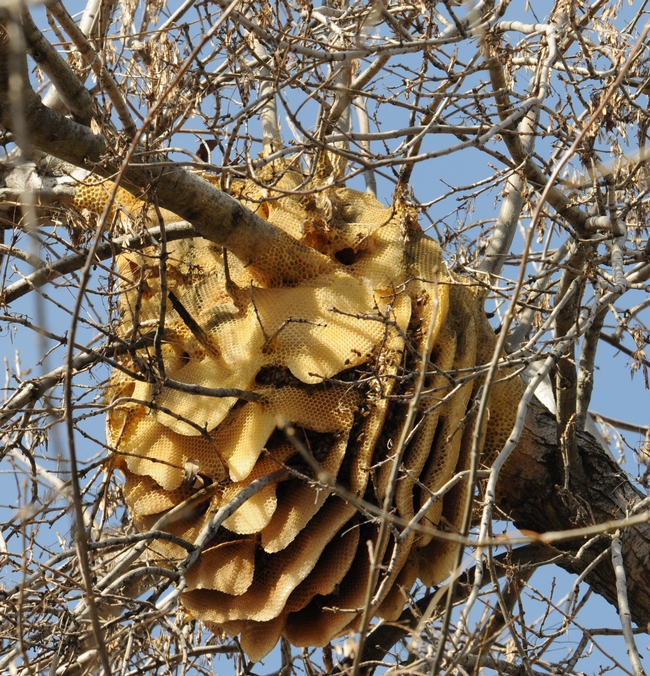
A feral honey bee colony (now gone) in Vacaville, Calif. (Photo by Kathy Keatley Garvey)
Arnon Dag: How to Improve Cross-Pollination in Almond, Pear, Apple and Cherry Trees
How can you improve cross-pollination in such tree crops as almond, pear, apple and cherry? Senior scientist Arnon Dag of the Agricultural Research Organization, Volcani Institute, Israel, will discuss his research at the UC Davis Department of Entomology...
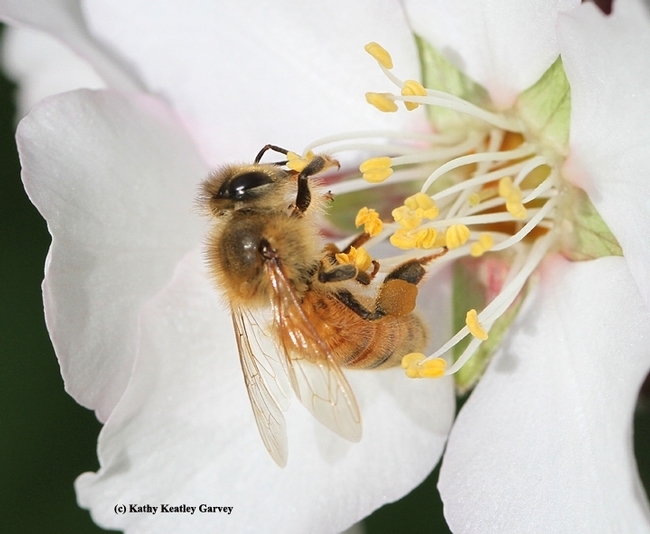
A honey bee pollinating an almond blossom. (Photo by Kathy Keatley Garvey)
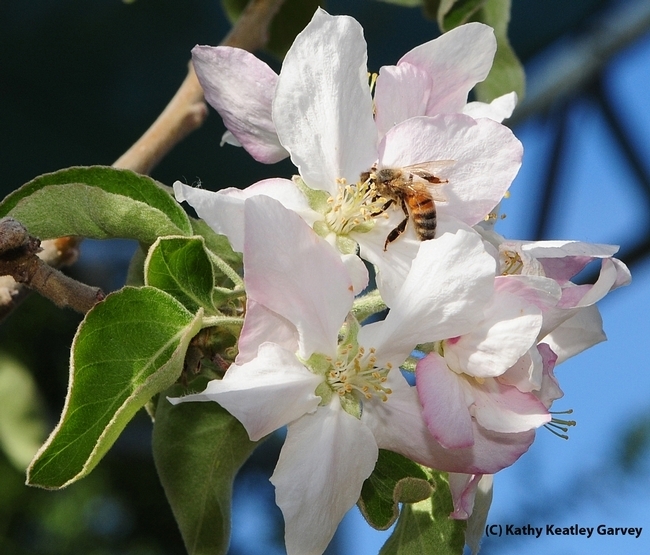
A honey bee pollinating an apple blossom. (Photo by Kathy Keatley Garvey)
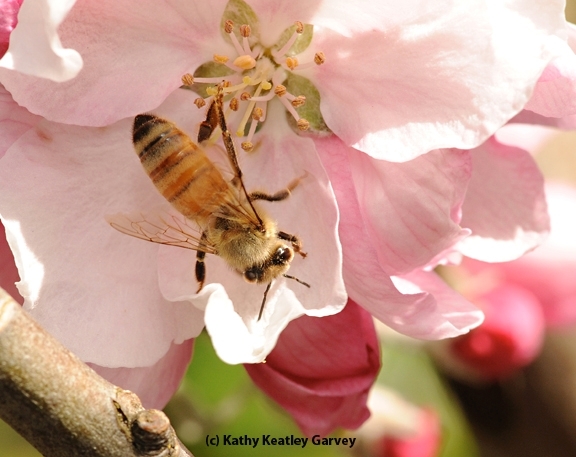
A honey bee pollinating a cherry blossom. (Photo by Kathy Keatley Garvey)
Undergrad Thesis Scores the Cover of Environmental Entomology
It's not every day that an undergraduate thesis makes the cover story of a professional journal. But that's the case with UC Davis doctoral student Grace Horne. Her undergraduate thesis about the effects of the decline of ash trees on native caterpillars, scored the cover of the February edition...
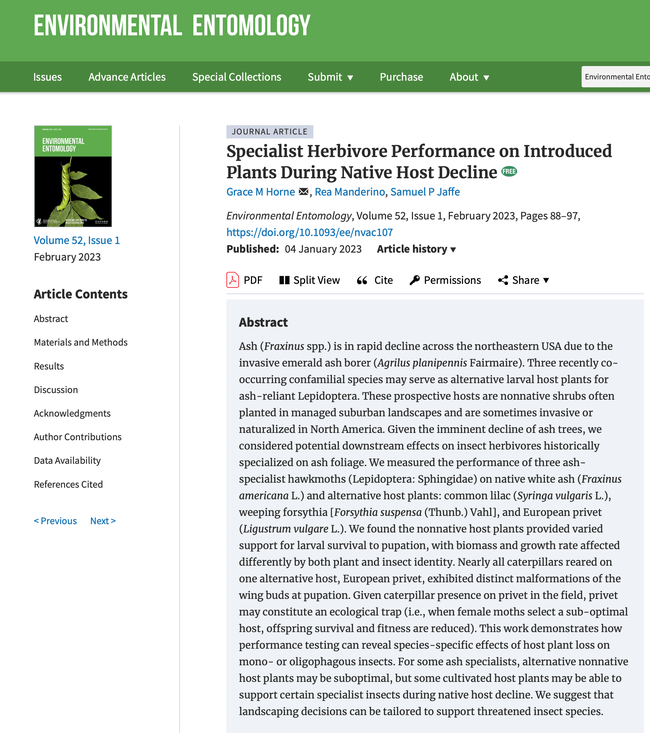
A screen shot of Grace Horne's work that appears in the current edition of the journal Environmental Entomology.
Now is the time to plant climate-ready trees, says UCCE researcher
In a drought-prone region like Southern California, working with Mother Nature is not only wise but necessary, according to Janet Hartin, UC Cooperative Extension horticulture advisor for Los Angeles, San Bernardino and Riverside counties, who studies climate-ready trees.
In 2020, Governor Newsom launched the California Climate Action Corps, empowering Californians to protect their communities from the impacts of climate change. Newsom's call to action emphasizes the need for long-term and sustainable solutions like Hartin's research, which urges Southern California to care for existing trees and plant new ones.
In collaboration with the U.S. Forest Service and other UC Cooperative Extension scientists, Hartin is amid a 20-year research study identifying trees suitable for California's different climate zones. Her work provides a comprehensive understanding of trees and their benefits related to human and environmental health, particularly as Californians navigate climate change's evolving challenges.
One of these concerns is urban heat islands. UHIs are areas in which heat is reradiated from paved concrete or asphalt surfaces. In cities covered in asphalt, like Los Angeles, average temperatures can become six degrees hotter than surrounding areas.
To reduce urban heat islands, she has been working with community organizations to plant trees. In March, for example, Hartin teamed up with the Inland Empire Resource Conservation District to increase tree canopy in the Inland Empire.
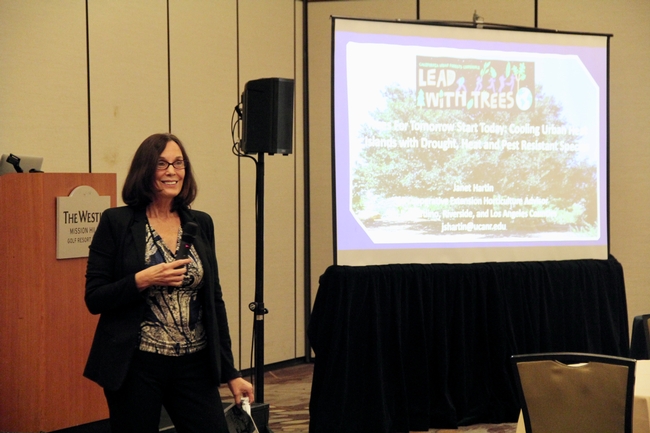
Trees keep cities cool
To keep the city cool, some Los Angeles neighborhoods are repainting pavements with reflective coating. According to a 2020 study published in Environmental Research Letters, reflective coating can decrease pavement temperatures up to 10 degrees. As helpful as this is, augmenting urban landscapes to include heat-, drought- and pest-resistant tree species, whether native or not, can significantly reduce the impacts of urban heat islands too.
“Trees can cool impervious surfaces by 40 to 65 degrees,” Hartin said. During a 2021 study, in May and June Hartin discovered that unshaded asphalt could be more than 60 degrees hotter than shaded asphalt during late spring and early summer in inland and desert cities.
Other than providing shade, trees are effective at deflecting the sun's radiation and cooling the atmosphere through evapotranspiration. Given that they absorb and store carbon as well, trees lessen the impacts of pollution from fossil fuels.
“A well-tended mature landscape tree can absorb 40 tons of carbon over its lifespan,” said Hartin.
In a 2021 blog post, Hartin suggests trees be selected based on their adaptation to the “micro-climate” in each particular landscape, noting factors to consider like shade, proximity to buildings, space needs below and above ground, soil type and water source. She also recommends the Sunset Western Climate Zone maps for reference, noting that they are “more precise than USDA zones for our warmer climates.”
Based on the study with the U.S. Forest Service examining the performance of 12 species of underplanted but promising landscape trees at UC Riverside, favorable candidates include bubba desert willow and maverick thornless honey mesquite for their drought resistance, and red push pistache for its drought and heat resistance.
Tamara Hedges, executive director of UC Riverside Palm Desert Center and member of the Board of Directors for the Oswit Land Trust, agrees that trees are important in our fight against climate change:
“Through our partnerships with the UC California Naturalist and the Master Gardener Programs and many other nonprofits in the Coachella Valley, natural ecosystems are being protected and expanded and built environments cooled through the planting of appropriate tree species. These UC/USFS studies go a long way in identifying new underrepresented tree species."
General tips for planting
For California, planting in early fall through late winter provides ample time for trees to establish a strong root system before enduring the summer heat. Doing so also means that natural rainfall can fulfill water needs, as opposed to solely relying on irrigation systems.
Unlike newly planted trees, mature trees should be watered infrequently but deeply. Watering too often can reduce the level of oxygen in the rootzone and result in waterlogged soils prone to crown and root rots. 
During the fall, trees only need about 15% of the water they would require in the summer. When watering, keep the tree trunk dry. Because the roots of the tree grow outward and are usually a foot deep into the ground, Hartin recommends watering the area around the trunk rather than the trunk itself. This will also help avoid water waste.
“Trees not adapted to the climate they're planted in and not receiving proper care are much more susceptible to invasive pests like shothole borers and diseases,” said Hartin. “Even the loss of one front yard tree can significantly reduce shade, increase the surrounding temperature, and diminish energy savings.”

